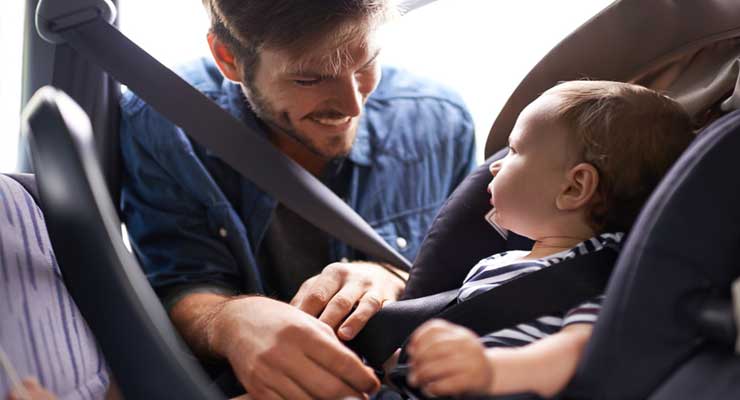Pickup trucks are making resurgence in the United States, with many women preferring the truck to the traditional station wagon or minivans as their vehicle of choice. While the utility of a truck is without question, it does raise safety concerns for how to transport children safely.
In most states, the laws require children to ride in the back seat, securely fastened into a car seat or booster seat. However, not all pickups have back seats or have back seats that are safe for securing a child properly. Being safety is a major concern for all parents, here are some guidelines for how to transport your child safely in a pickup truck.
Back Seat
If you are driving a full-size pickup truck, there should be seats that are appropriate for both booster seats as well as infant car seats. In modern trucks, these seats will have the LATCH system installed, which makes installing the car seat much easier and ensures it is safe once you are done.
If you are driving a smaller body pickup, there may not be enough space in the back seat to secure a safety seat properly. Safety seat manufacturers recommend that 80-100 percent of the car seat base remain in contact with the seat. A general rule of thumb is that if the safety seat hangs over the car’s seat at all, it is probably not the right fit.
Additionally, in small cab pickup trucks, there may not be enough room for a rear-facing seat to sit down at the right angle, which can increase the likelihood of injury in the event of an accident. Be sure to read the manual that come with your child’s safety seat to understand what proper installation looks like.
Finally, look in the owner’s manual for your car to find the recommended place for car seat installation.
Front Seat
If you must install a safety seat in the front of your truck, you want to be sure to turn off the passenger-side air bag. Studies have shown that airbags can cause serious injury and death for children under twelve years old. This is caused the force at which the airbag is deployed to be effective.
Keep in mind that according to CarSeat.org, children riding in a safety seat in the front seat of a vehicle have a thirty percent increased risk of death in the event of an accident.
Side Seats
Side seats are not the safest place for children to ride, either in a safety seat or just buckled into the seat. For safety seats, the flip down seat is often not nearly big enough to install the safety seat properly, causing an increased safety risk. Further, in the event of a collision, passengers in these seats are often injured by being bounced around and hitting the interior of the cab.
Checking Your Seats For Safety
It is extremely important to check your safety seat to ensure it is installed correctly. In many areas there are free checks provided to families. Sometimes hospitals, school districts, fire departments, police departments and even some children’s stores offer these inspections. In most cases, these inspections will not only check for proper installation of your car seat, but also check that your seat is not under a recall. In some instances, a free car seat is immediately offered as a replacement to ensure the safety of child passengers. You can find a local car seat inspection station at safercar.gov
Pickup trucks are great vehicles, and can be very useful when you have kids. Ensuring your child is properly restrained and protected can be challenging. Be sure to follow these simple guidelines, and utilize car seat inspections to ensure your child is safe while you drive.
More on Car Seat Safety






